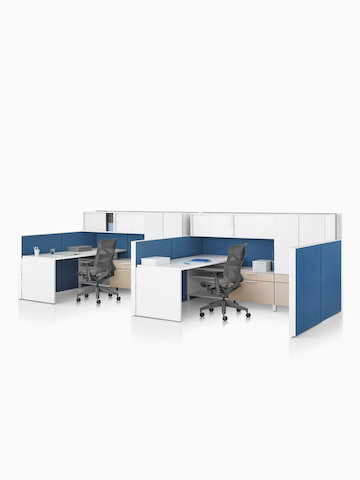Products by Douglas Ball
Skip SliderAnd that’s pretty much what he’s been doing ever since.
Ball graduated from Ontario College of Art and began his career as a consultant with Sunar, a former Canadian company that initially designed all kinds of products, “but because I was most interested in furniture, that’s the direction we both headed,”says Ball.
Although the designer has spent most of his career in office furniture, transportation for the disabled has also held his interest. In fact, through a serendipitous set of circumstances, he once designed a wheelchair for the Queen Mother of Oman.
He introduced his first office furniture system, Race, for Sunar, back in 1980, and his Clipper CS-1, a self-contained, encapsulated computer workstation, is in the permanent collection of the British Design Museum in London.
One of the things he likes about working in the furniture industry is that he is continually challenged to break new ground. “To me, the most exciting projects are ones where you’re going down a totally new road, and every step you take is a discovery,”
says Ball. “You can’t refer to books or magazines to solve the problem, you have to solve it yourself.”
For My Studio Environments, he basically reinvented the existing systems paradigm by creatively combining the complex and contradictory features of the private office and the open cubicle. “Workers have not only had to give up offices with doors, they’ve also had to give up space,” says Ball. “So my goal was to optimize their work area so it feels larger than it really is. I want people to come in on Monday morning and be happy that they’re there.”
But then, as he explains, he’s always loved working in small spaces himself. “I appreciate the interior of a sailboat, for example, and I have an old VW Westphalia bus that is beautifully designed inside, very compact and functional. So I really enjoyed the challenge of designing My Studio Environments.”
While the Vivo interiors system, the forerunner of Canvas Office Landscape, presented him with a different set of criteria, it was again his attention to small details—like that little light-reflective bead between the tiles—that helped create the aesthetic effect he was after.
Looking back over his long and successful career, Ball says he often wonders if he would have made the same choices had he been born a few generations later. “These days, kids have so many toys, they don’t need to draw them,” he laughs. “But when I was young, things were a lot different.”
And thanks to this creative problem-solver, today’s office environments are a lot different, too.


